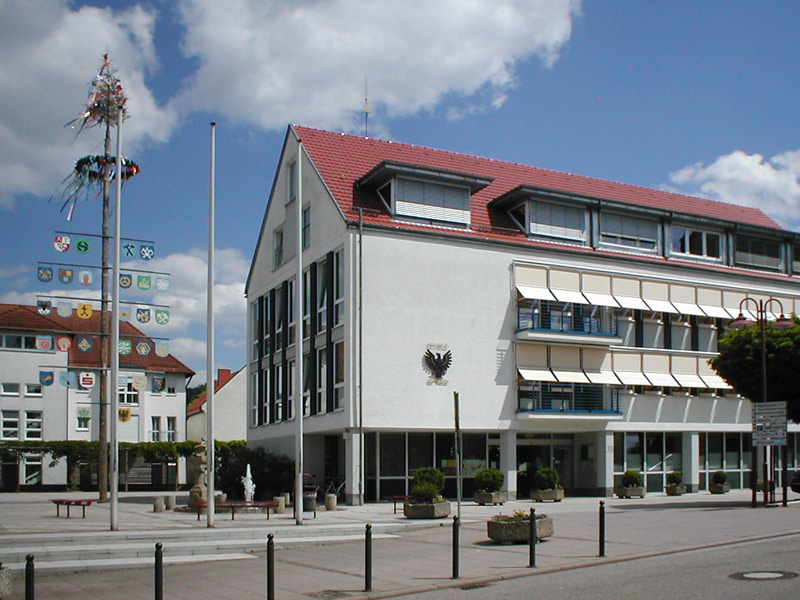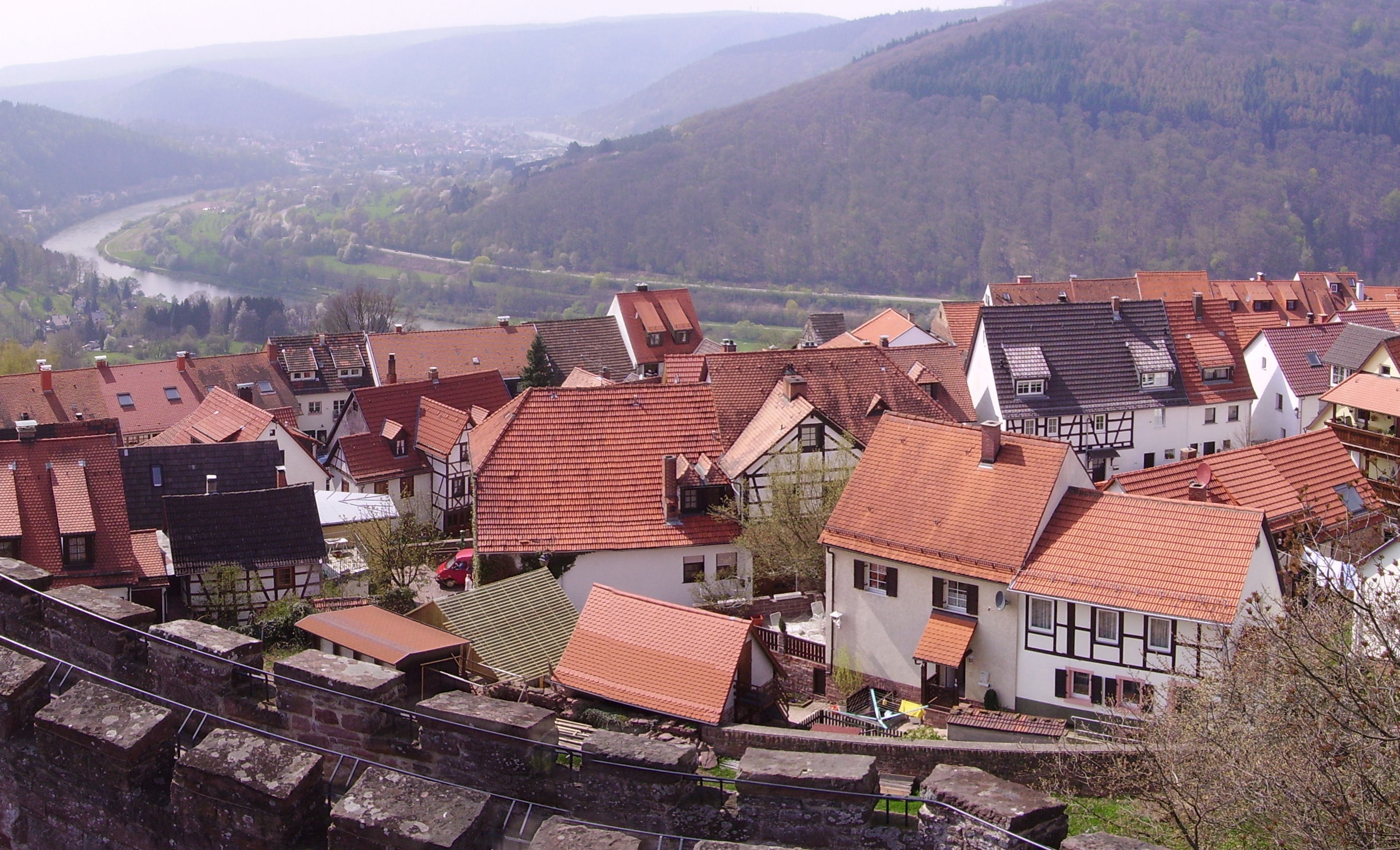|
Waibstadt
Waibstadt () is a town in the district of Rhein-Neckar-Kreis, in Baden-Württemberg, Germany. It belongs to the municipal administration union "Waibstadt", which consists of Epfenbach, Helmstadt-Bargen, Neckarbischofsheim, Neidenstein, Reichartshausen and Waibstadt itself. Furthermore, it is part of the touristic region Brunnenregion. Geography Geographic location Waibstadt is located in the valley of the Schwarzbach in the northern Kraichgau, about 25 km southeast of Heidelberg and about 6 km north of Sinsheim. Neighbour municipalities The town is surrounded in the northwest by Neidenstein, in the north by Epfenbach, in the northeast by Helmstadt-Bargen, in the east by Neckarbischofsheim, in the south by Sinsheim and in the west by Zuzenhausen and Eschelbronn. Parts of town Besides the main town Waibstadt, the two villages Daisbach and Bernau are part of Waibstadt. History The first documented mentioning date at 795 AD, but there are indications, th ... [...More Info...] [...Related Items...] OR: [Wikipedia] [Google] [Baidu] |
Epfenbach
Epfenbach is a municipality in south western Germany. It is located between Heidelberg and Sinsheim in the Rhein-Neckar district in the state of Baden-Württemberg. The municipality belongs to the municipal association of Waibstadt and the tourist region Brunnenregion (''Water Spring Region''). The meaning of the name ''Epfenbach'' is disputed. It could be derived from a person or plant name. Geography Epfenbach is in Kraichgau on the edge of the little Odenwald. History Epfenbach first appears in documents in the year 1286 as ''Epphinbach'' on a bestowal document of the Schönau Abbey. In 1325, the manor was sold to the Archbishopric of Mainz and then resold in 1344 to the knight Engelhard von Hirschhorn. In the centuries to follow, ownership of the manor changed often. In 1622, Count Tilly burned down the village. In 1643, the Johannes-Kirche (''Church of Saint John'') in Epfenbach was besieged by 400 horsemen of Lorraine. Legend has it that the Schultheiß at the time ... [...More Info...] [...Related Items...] OR: [Wikipedia] [Google] [Baidu] |
Rhein-Neckar-Kreis
The Rhein-Neckar-Kreis is a district in the northwest of Baden-Württemberg, Germany. The administrative headquarters are based in the city Heidelberg, which is a district-free city. As of 2019, the district is the most populous in Baden-Württemberg. History The district was created in 1973 by merging the previous districts of Heidelberg, Mannheim and Sinsheim. Geography The district is named after the two main rivers which flow through the district, the Rhine and Neckar. The highest elevation is 580 m near the 584 m tall peak of the Odenwald mountain Stiefelhöhe, located near Heiligkreuzsteinach. The lowest elevation with 92 m is in Ilvesheim, located in the Neckar valley. Sights Government The district is governed by a district assembly (''Kreistag'') and a district executive (''Landrat''). The eligible voters of the district elect the Kreistag every 5 years. This body in turn elects the Landrat every 8 years. The Landrat is the legal representative of the district as wel ... [...More Info...] [...Related Items...] OR: [Wikipedia] [Google] [Baidu] |
Kraichgau
The Kraichgau () is a hilly region in Baden-Württemberg, southwestern Germany. It is bordered by the Odenwald and the Neckar to the North, the Black Forest to the South, and the Upper Rhine Plain to the West. To the east, its boundary is considered to be the Stromberg and the Heuchelberg. The largest towns of the Kraichgau are Sinsheim, Eppingen, and Bretten. On the western end of the Kraichgau is the town of Bruchsal, the gateway to the Rhineland plains. Origins of the name The word "Kraich" apparently arose from the Celtic word "Creuch," meaning "mud" or "loam." The territory of a Gau (country subdivision) signifies an open area, free from woods, such as farmland or meadows. The area of Kraichgau was first mentioned in the Early Middle Ages, in the Lorsch codex, as "Creichgowe" in the year 769. In 773, it was called "Chrehgauui," in 778 "Craichgoia." By 1594, the name was closer to its modern form, being referred to as "Kreuchgau." See also *Aalkistensee Aalk ... [...More Info...] [...Related Items...] OR: [Wikipedia] [Google] [Baidu] |
Bernau Im Rhein-Neckar-Kreis in Baden-Württemberg, Germany
{{Disambig ...
Bernau may refer to: *Bernau bei Berlin, a town in Brandenburg, Germany *Bernau am Chiemsee, a municipality in the district of Rosenheim in Bavaria, Germany *Bernau im Schwarzwald, a municipality in Baden-Württemberg, Germany *Bernau im Rhein-Neckar-Kreis, a part of Waibstadt Waibstadt () is a town in the district of Rhein-Neckar-Kreis, in Baden-Württemberg, Germany. It belongs to the municipal administration union "Waibstadt", which consists of Epfenbach, Helmstadt-Bargen, Neckarbischofsheim, Neidenstein, Reich ... [...More Info...] [...Related Items...] OR: [Wikipedia] [Google] [Baidu] |
Eschelbronn
Eschelbronn is a village with 2,597 inhabitants in the Rhein-Neckar district of Baden-Württemberg, Germany. It is adjacent to Sinsheim. History Eschelbronn was already mentioned in the year 788/789 in a deed of donation from the monastery of Lorsch. In the end of the 13th century it became property of the diocese of Speyer. In 1267 a castle of wood was built and later in 1375 was transformed to a moated castle of stone. In 1526 the population were converted to Lutheranism. In 1803 Eschelbronn became a part of Baden. 1807 the village joined the district of Waibstadt and was assigned 1813 to the district of Sinsheim, which in the year 1973 became the Rhine Neckar Area The Rhine-Neckar Metropolitan Region (german: Metropolregion Rhein-Neckar, ), often referred to as Rhein-Neckar-Triangle, is a polycentric metropolitan region located in south western Germany, between the Frankfurt/Rhine-Main region to the North .... Economy In former times the main income source from the in ... [...More Info...] [...Related Items...] OR: [Wikipedia] [Google] [Baidu] |
Reichartshausen
Reichartshausen is a municipality in the district of Rhein-Neckar in Baden-Württemberg in Germany Germany,, officially the Federal Republic of Germany, is a country in Central Europe. It is the second most populous country in Europe after Russia, and the most populous member state of the European Union. Germany is situated betwe .... It belongs to the Waibstadt municipal administration association. References Rhein-Neckar-Kreis Baden {{RheinNeckar-geo-stub ... [...More Info...] [...Related Items...] OR: [Wikipedia] [Google] [Baidu] |
Christlich Demokratische Union Deutschlands
The Christian Democratic Union of Germany (german: link=no, Christlich Demokratische Union Deutschlands ; CDU ) is a Christian democratic and liberal conservative political party in Germany. It is the major catch-all party of the centre-right in German politics. Friedrich Merz has been federal chairman of the CDU since 31 January 2022. The CDU is the second largest party in the Bundestag, the German federal legislature, with 152 out of 736 seats, having won 18.9% of votes in the 2021 federal election. It forms the CDU/CSU Bundestag faction, also known as the Union, with its Bavarian counterpart, the Christian Social Union in Bavaria (CSU). The group's parliamentary leader is also Friedrich Merz. Founded in 1945 as an interdenominational Christian party, the CDU effectively succeeded the pre-war Catholic Centre Party, with many former members joining the party, including its first leader Konrad Adenauer. The party also included politicians of other backgrounds, including libe ... [...More Info...] [...Related Items...] OR: [Wikipedia] [Google] [Baidu] |
Blasonierung
In heraldry and heraldic vexillology, a blazon is a formal description of a coat of arms, flag or similar emblem, from which the reader can reconstruct the appropriate image. The verb ''to blazon'' means to create such a description. The visual depiction of a coat of arms or flag has traditionally had considerable latitude in design, but a verbal blazon specifies the essentially distinctive elements. A coat of arms or flag is therefore primarily defined not by a picture but rather by the wording of its blazon (though in modern usage flags are often additionally and more precisely defined using geometrical specifications). ''Blazon'' is also the specialized language in which a blazon is written, and, as a verb, the act of writing such a description. ''Blazonry'' is the art, craft or practice of creating a blazon. The language employed in ''blazonry'' has its own vocabulary, grammar and syntax, which becomes essential for comprehension when blazoning a complex coat of arms. Other ... [...More Info...] [...Related Items...] OR: [Wikipedia] [Google] [Baidu] |


